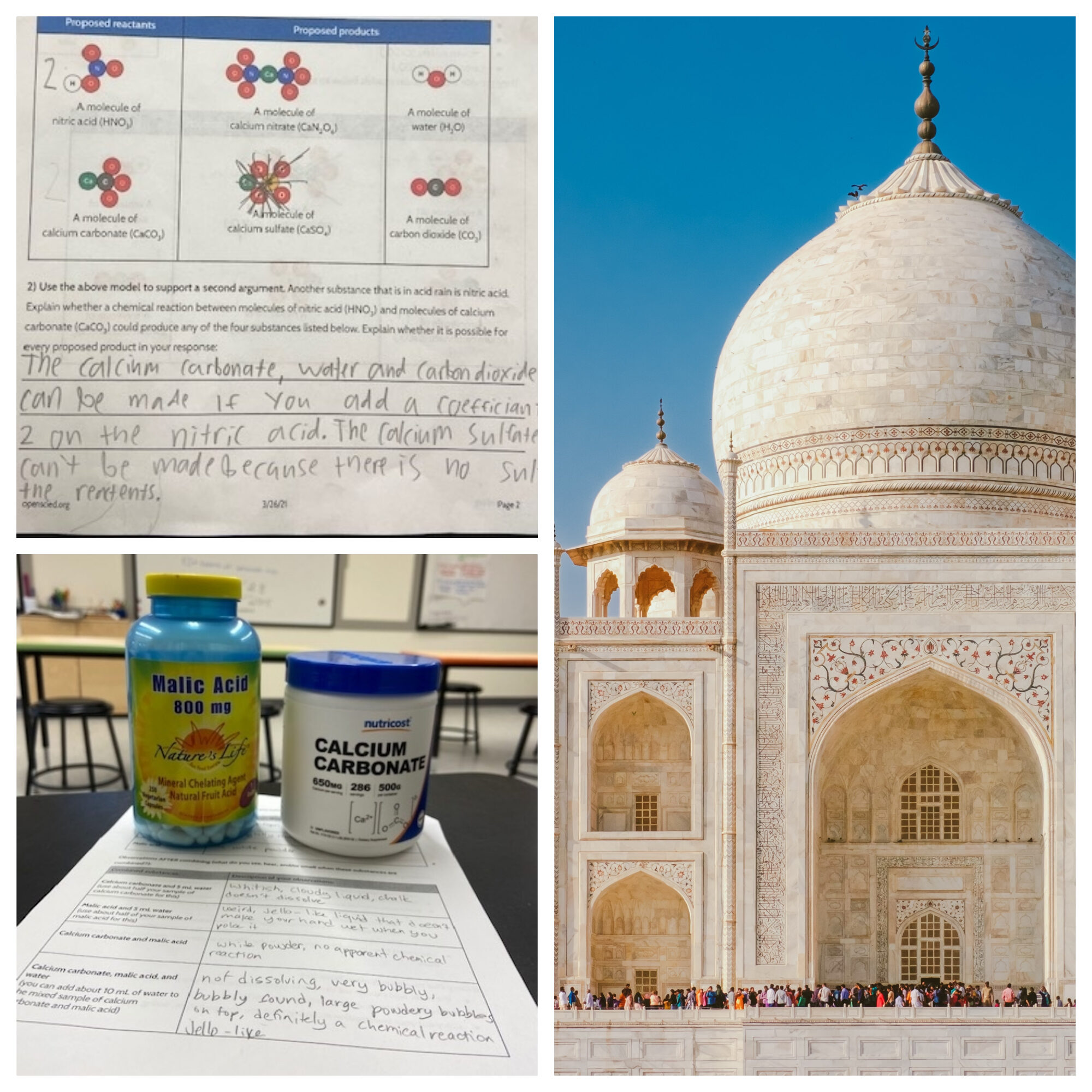Hyla Stories
Chemistry, Historic Preservation, and Environmental Policy

7TH GRADE SCIENCE:
“Chemistry is everywhere!” says middle school science teacher Alex with her bright-eyed enthusiasm. “Even when it’s not observable, chemical reactions happen all around us.” One of her favorite parts about teaching chemistry is that she gets to show students that “there is a lot going on in our world that’s invisible to us unless we run experiments to see results.” Case in point: the Taj Mahal. Having used molecular models to investigate how atoms of starting substances rearrange to form new substances when a chemical reaction occurs, Alex asked students a question from across the world: “Why are the walls of the Taj Mahal cracking and crumbling?” To find the answer, students conducted a lab looking for evidence of a chemical reaction between calcium carbonate (the material the Taj Mahal is made of) and malic acid (a substance produced by algae growing on its walls). Sure enough: Hiss! Fizz! Proof of a chemical reaction! But not the only one.
“The crumbling walls haven’t always been a problem,” Alex explained. “When the Taj Mahal was built over 300 years ago, calcium carbonate was an ideal substance for building construction. But that was before the industrial revolution when there weren’t pollutants in the atmosphere.” Students then explored the chemical formula of two pollutants that cause acid rain and determined the balanced chemical equation. The chemistry lab then evolved into environmental policy and historic preservation as students used the balanced chemical equation to draft a recommendation to the Indian Government to limit the pollutants in acid rain.
“They learn that this human-made monument is now being damaged by other human-made forces,” said Alex, “which shows students that one decision in one area can impact something in another area quite significantly. And ultimately, so many of our environmental challenges are chemical reactions.” As students observed chemical reactions, they also practiced what to do with the information they gather as scientists to practice using data for impact. “This unit equips students to connect the dots. They begin to see that we need to pull from different disciplines and collect data to really solidify our understanding. And then we need to share it out and communicate our findings to make meaningful change.”

